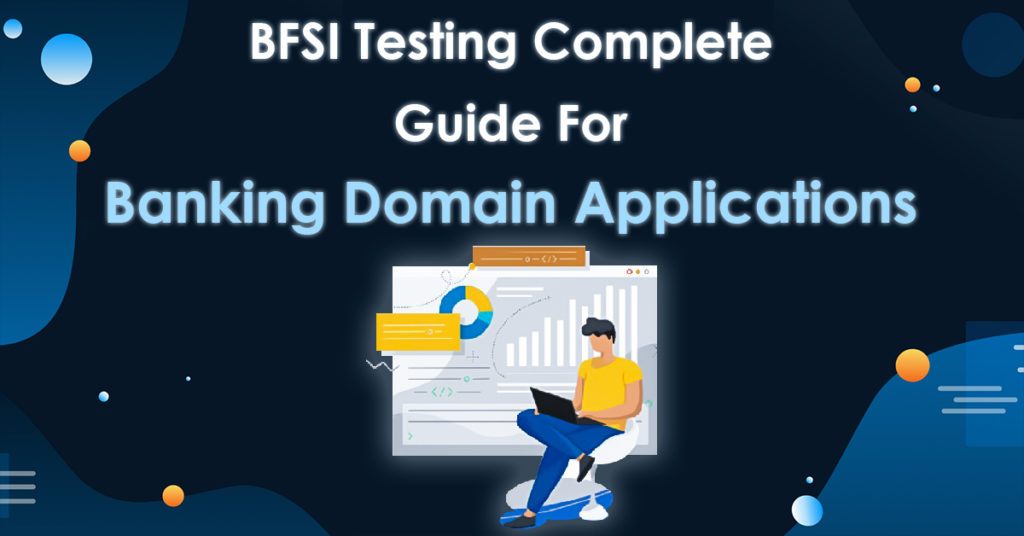

BFSI Testing Complete Guide For Banking Domain Applications
Banking software is one of the most difficult applications in the market for software testing and development today.
Let’s first define the components of a banking application:
- Support for multi-tier functionality with thousands of active user sessions.
- Broad Integration: A banking application often integrates with a number of different applications, such as Trading Accounts and the Bill Pay service.
- difficult business procedures
- Real-time and batch processing
- High Transaction Rates with Secure Transactions
- To track everyday transactions, a strong reporting component is essential.
- a thorough assessment to address customer issues
- fantastic storage system
- Management of Disaster Recovery
The aforementioned features make up the top 10 characteristics of a banking application.
There are several processes involved in carrying out an operation in a financial application.
A banking application would look somewhat like this:
- Web server for user interaction using a browser.
- Middle Tier to check the web server’s input and output.
- database to keep track of both actions and data.
- A transaction processor that can process billions of transactions per second could be a large-capacity mainframe or any other legacy system.
When testing banking apps by a software development company, a variety of testing techniques must be utilized in an end-to-end continuous testing process to confirm the following:
- Comprehensive accounting for all corporate requirements and financial procedures.
- The application’s capabilities
- The application’s safety feature
- Data Integrity and Concurrency User Experience
Why are banking apps so challenging to use?
- Banking software typically deals with sensitive financial information, so it must run securely and without errors.
- When developing these applications, developers opt to utilize a complicated architecture to ensure that the programme functions in the appropriate, secure manner.
- Banking is a sector that is always changing. Customer service, physical branches, ATMs, online banking, and other channels are now available for customers to obtain banking services.
- Technology advancements have flooded the market with a wide range of wallets that connect to banking systems.
- Furthermore, it is predicted that banking would run effectively and constantly, every day of the week. Software updates, hotfixes, etc. should not have an impact on this availability.
- The banking industry is also significantly impacted by the government’s continuing changes to banking rules. The financial system will be impacted by any changes to the tax code.
- The banking system must also be up to date with new technology. Big data processing and data science using insights from big data are becoming more and more common in the banking sector.






